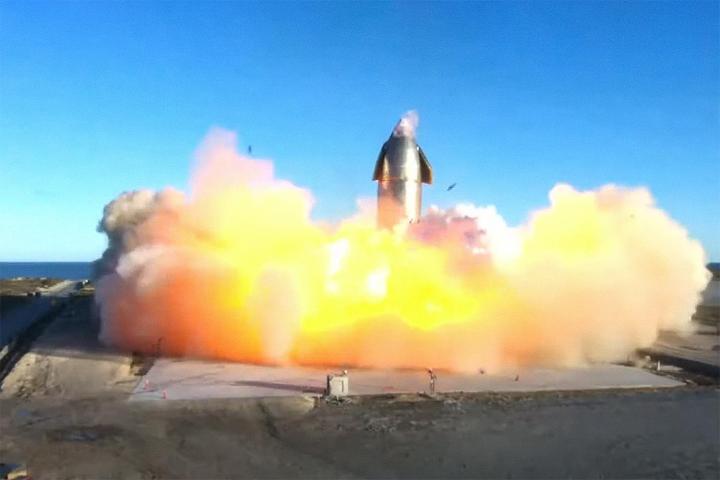
SpaceX’s high-altitude test of its Starship prototype SN8 in December 2020 ended in an explosive fireball, though company CEO Elon Musk seemed happy with the data collected during the test. But the Federal Aviation Administration (FAA) which oversees regulations for rocket launches is concerned about the explosion and other issues, according to reports which say SpaceX is now the subject of an FAA investigation.
As reported by The Verge, the explosion in December is not the FAA’s only concern. The agency is reportedly also concerned about breaches of SpaceX’s test license, and has opened an investigation into the company. The exact details of what SpaceX supposedly did in violation of its license has not yet been made public.
“The FAA will continue to work with SpaceX to evaluate additional information provided by the company as part of its application to modify its launch license,” FAA spokesman Steve Kulm said, as reported by The Verge. “While we recognize the importance of moving quickly to foster growth and innovation in commercial space, the FAA will not compromise its responsibility to protect public safety. We will approve the modification only after we are satisfied that SpaceX has taken the necessary steps to comply with regulatory requirements.”
The issues with the FAA put the brakes on plans for another high-altitude test of the newer SN9 prototype, which had been expected to go ahead this week. The test had to be postponed after the FAA lifted the temporary flight restrictions in the airspace around the test site.
In this context, CEO Elon Musk was critical of the FAA on Twitter, saying its space division has “a fundamentally broken regulatory structure” and that its rules were not reflective of the modern situation of multiple expendable launches being performed regularly.
Unlike its aircraft division, which is fine, the FAA space division has a fundamentally broken regulatory structure.
Their rules are meant for a handful of expendable launches per year from a few government facilities. Under those rules, humanity will never get to Mars.
— Elon Musk (@elonmusk) January 28, 2021
Now, SpaceX has two prototypes ready to test — both the SN9 and the SN10. Both prototypes have been seen side by side on the SpaceX pad at Boca Chica. Space.com speculates that the next test flight could go ahead next week, from Monday, February 1, as long as the approvals from the FAA are granted in time.
Editors' Recommendations
- SpaceX’s Falcon 9 rocket just completed a milestone mission
- SpaceX all set for a record-breaking rocket launch on Friday
- SpaceX shares stunning night shot of its Super Heavy booster
- SpaceX already has a date in mind for next Starship launch
- Take a high-speed ride on SpaceX’s emergency escape chute




